Life in the frozen north: How underground riches created a remote Canadian town – then nearly destroyed it
Schefferville was built in the 1950s to harvest iron and almost disappeared when the mine closed down in 1982. But not all residents are happy about the return of the industry, says Rachel Savage

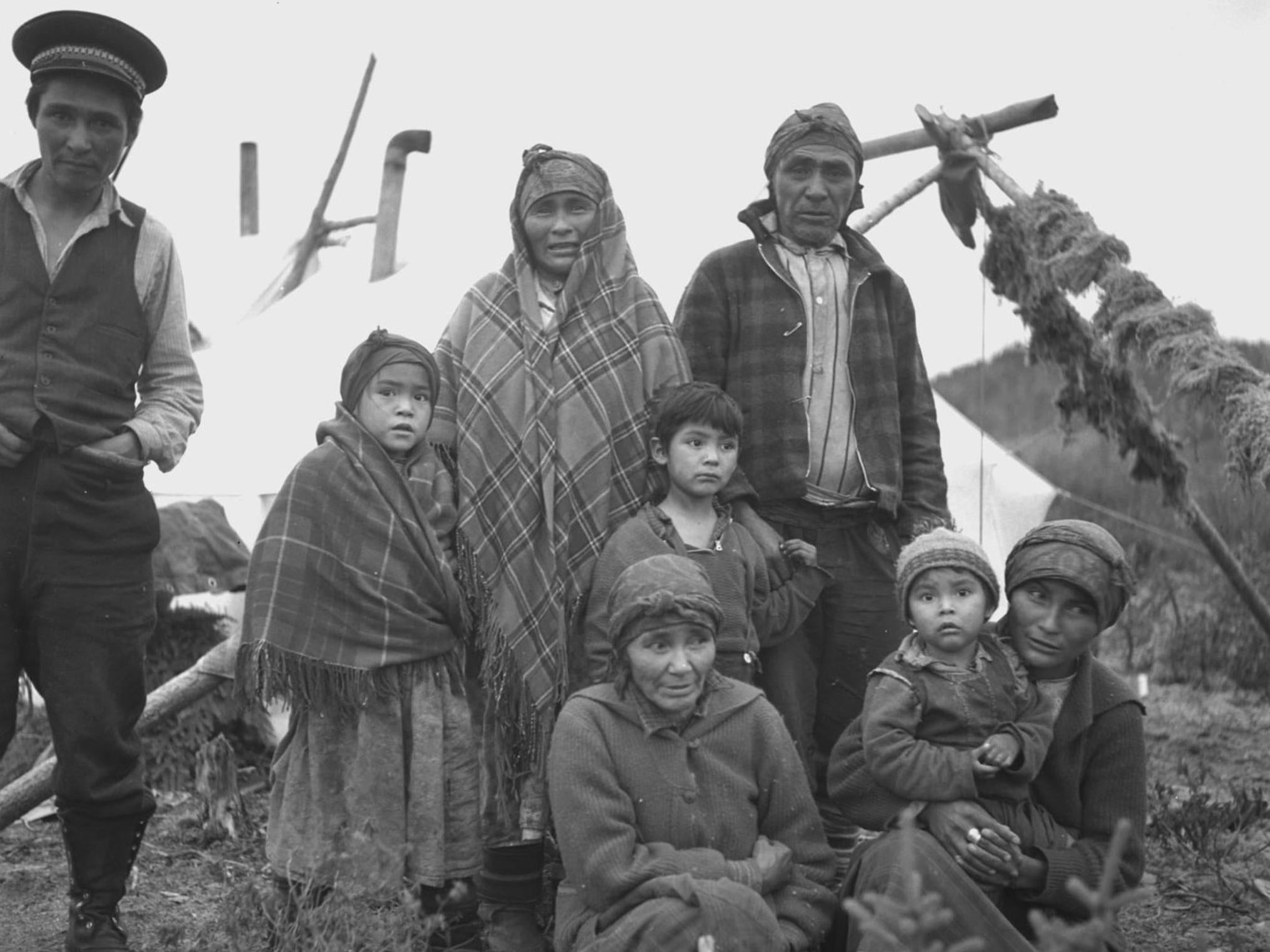
In the middle of spring, the toy train outside Schefferville’s town hall is almost completely submerged, its round body and chimneys just poking out of huge white drifts. As the weather warms above freezing in May, it begins to emerge from the melting snow, black paint peeling slightly to reveal rusted metal. It is a reminder of the heyday of a remote Canadian town that was once home to around 5,000 people.
As of 2016, only 155 people lived in Schefferville (although 646 lived in an adjoining First Nations reservation, and another 906 in a second reservation nine miles away). The story of the town’s birth and decay is, in large part, the story of the riches hidden beneath its soil. Soil that is rust-red and, like the toy train, can only be seen during the short summer months.
Schefferville was built in the 1950s to harvest iron ore and almost disappeared when the mine closed down in 1982. It is not surprising, then, that the inhabitants who clung on to this distant corner of northeast Quebec, only accessible by a twice-weekly all-day train, or a $1,300 (£988) return flight, are sceptical about the return of mining in the past decade.
My dad was born in Schefferville in 1959, a fact written in his passport. In the coming decades there will be fewer and fewer people like him. When the mine shut down, Schefferville’s hospital was razed to the ground. Pregnant women now have to fly south to give birth.
Schefferville has always had a few lines in our family mythology: the place where the lake was iced over for 11 months of the year, where your eyeballs could freeze in the middle of winter. When I interviewed my nana for this article she corrected me. If you didn’t wear a balaclava it was your eyelashes that could freeze together, as the warm steam of your breath turned to ice.
Nana and Grandpa Mike left Schefferville in February 1960, when dad was just six months old. Neither have ever returned.
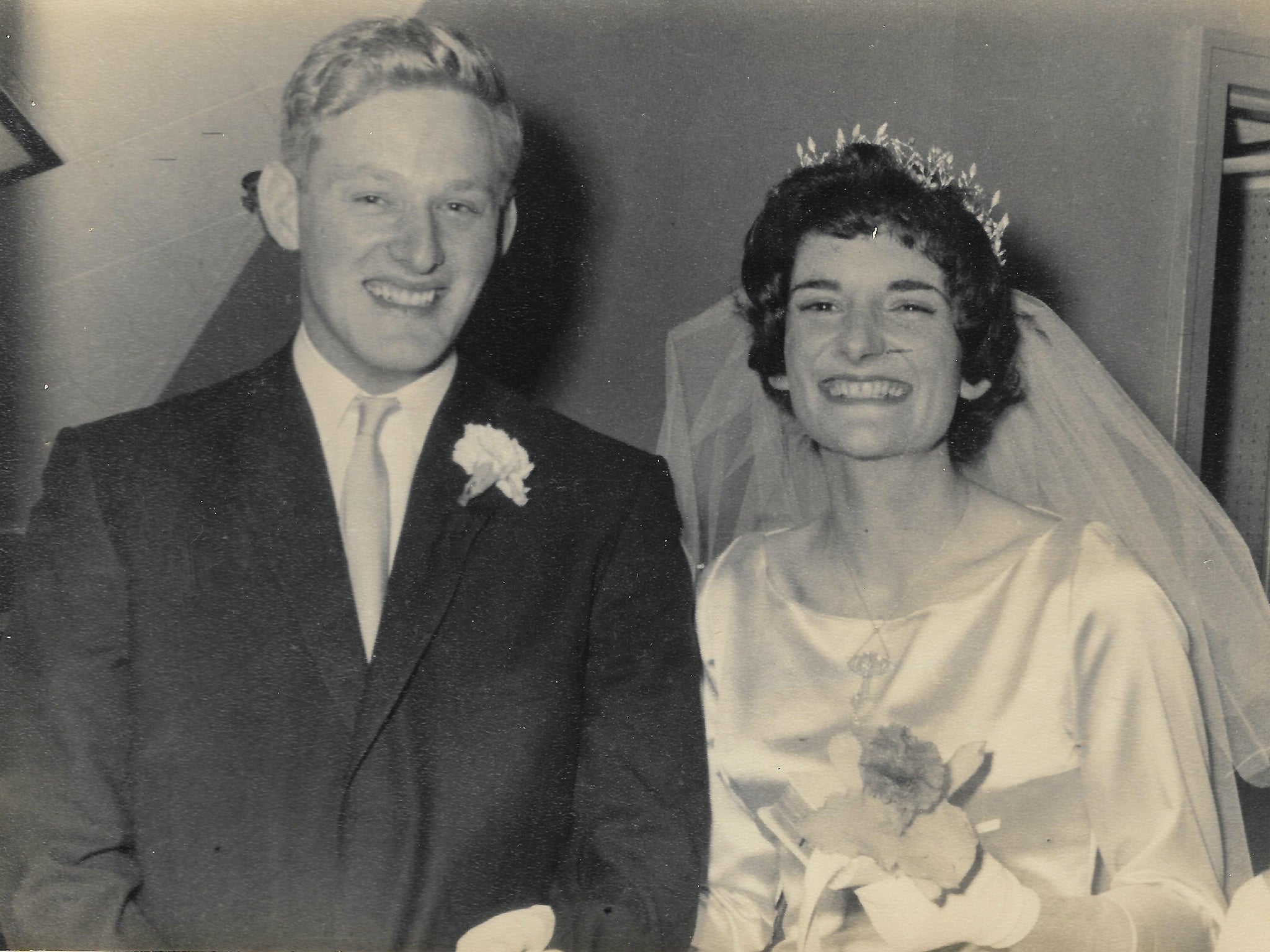
But I was curious, despite the fact that its reputation didn’t exactly precede it. “Schefferville is now a run-down, blackfly-ridden reserve where houses can be bought for $10,” sneered a 2001 Rough Guide to Canada, that still sits on my parents’ shelves. “The town is essentially a dead-end spot.”
There is nothing to see in the pitch-black when I arrive in Schefferville at 11pm, after 15 hours on a train across the Labrador peninsula from the port city of Sept-Îles (there are no roads to the town). But the following morning, everything is stark and bright; blue skies and white snow.
The town is half a dozen narrow streets, roughly tracing concentric circles between Knob Lake and Pearce Lake. “Like a big oval braided rug,” says Ben Jancewicz, who moved to town with his family aged five in 1988 and left after high school.
Cross one road to the east and you enter the First Nations reservation of Matimekush, sandwiched between the east shore of Pearce Lake and Schefferville’s airport. The town centre is little more than one street: two stores, a town hall and post office, the Hotel Royal, the Motel Porlier, a car repair workshop and a diner.
Most of the compact, two-storey houses are clad in smartly painted wood. Others are unfinished, the insulation exposed. They, along with the rusting toy train, hint at the town’s decline.
“I basically grew up in a giant ghost town,” says Mr Jancewicz. “Because it’s so remote they didn’t really tear anything down until much later.”
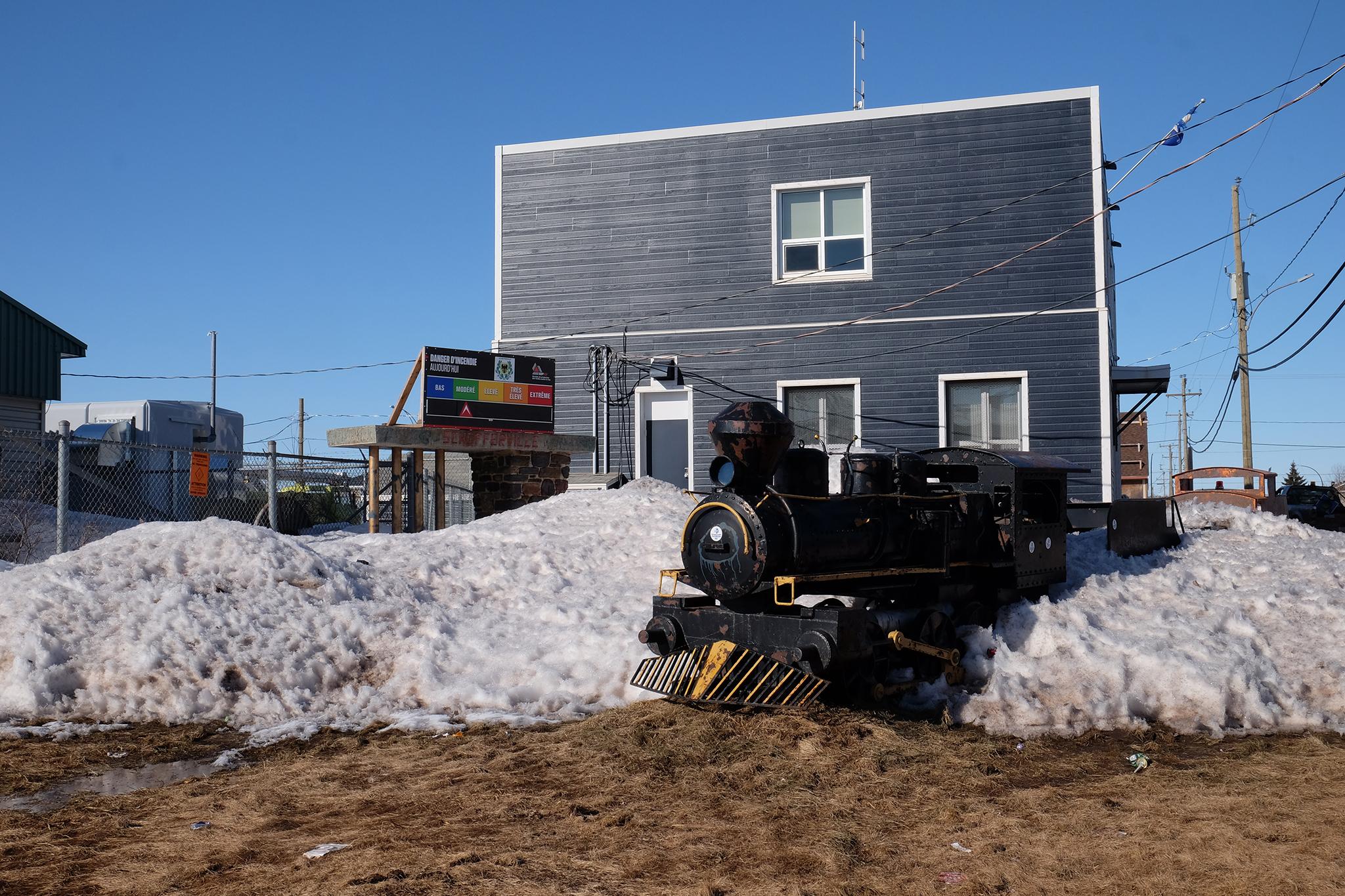
But the hospital, the curling rink, the swimming pool, the Roxy cinema, were all eventually demolished and the gaps they left filled in.
A geologist first found iron ore in what became known as the Labrador Trough in 1895. But it wasn’t until 1949 that the Iron Ore Company of Canada (IOC) was incorporated in Delaware. Post-war America was booming and its steel mills were hungry for iron ore.
In 1950, the company established a camp at Knob Lake, in the midst of a wilderness only traversed by First Nations hunting caribou, hundreds of miles from any coast. The following year, the IOC began to hack a railway northwards from Sept-Îles, where the ore was shipped out from the Gulf of St Lawrence, across 355 miles of mountainous river valley and marshy lake land.

Hammond Innes, a British adventure-thriller novelist, visited the railway in 1953, a year before its completion. In a 1958 novel he wrote of “the iron-hard harshness of the north, the sense of a wild, untamed country not yet touched by man”. The book was called The Land God Gave to Cain, the phrase French explorer Jacques Cartier used to describe the north shore of the St Lawrence River when he arrived in Canada in 1534. In the Book of Genesis Cain is condemned by God to farm barren land after killing his brother Abel. For most white people, the Labrador Peninsula was still that godforsaken wilderness.
If the mine hadn’t shut down… life for me would have been different. Most people for sure would have grown up to do what their fathers would have done at the mine
Mike Savage and Cindy Rowe met at a friend’s Christmas party in London in 1956. Grandpa Mike was studying mining engineering at Imperial College, Nana was home for the holidays during her second year of a classics degree in Edinburgh. “There I met him and that was that pretty well,” she says.
Grandpa Mike headed home to Canada after graduating, arriving in what was now Schefferville, named for Bishop Lionel Scheffer of Labrador, in October 1957. Landing between the ridges and the lakes, his first impression was of a landscape that was “wild and woolly, like a sheep”.
He became an engineer, surveying, sampling, and positioning explosives in an open pit mine, exposed to the brutally cold elements. Colleagues were “fairly hard-ass people, but not nasty,” he recalls. “You were expected to perform properly.”
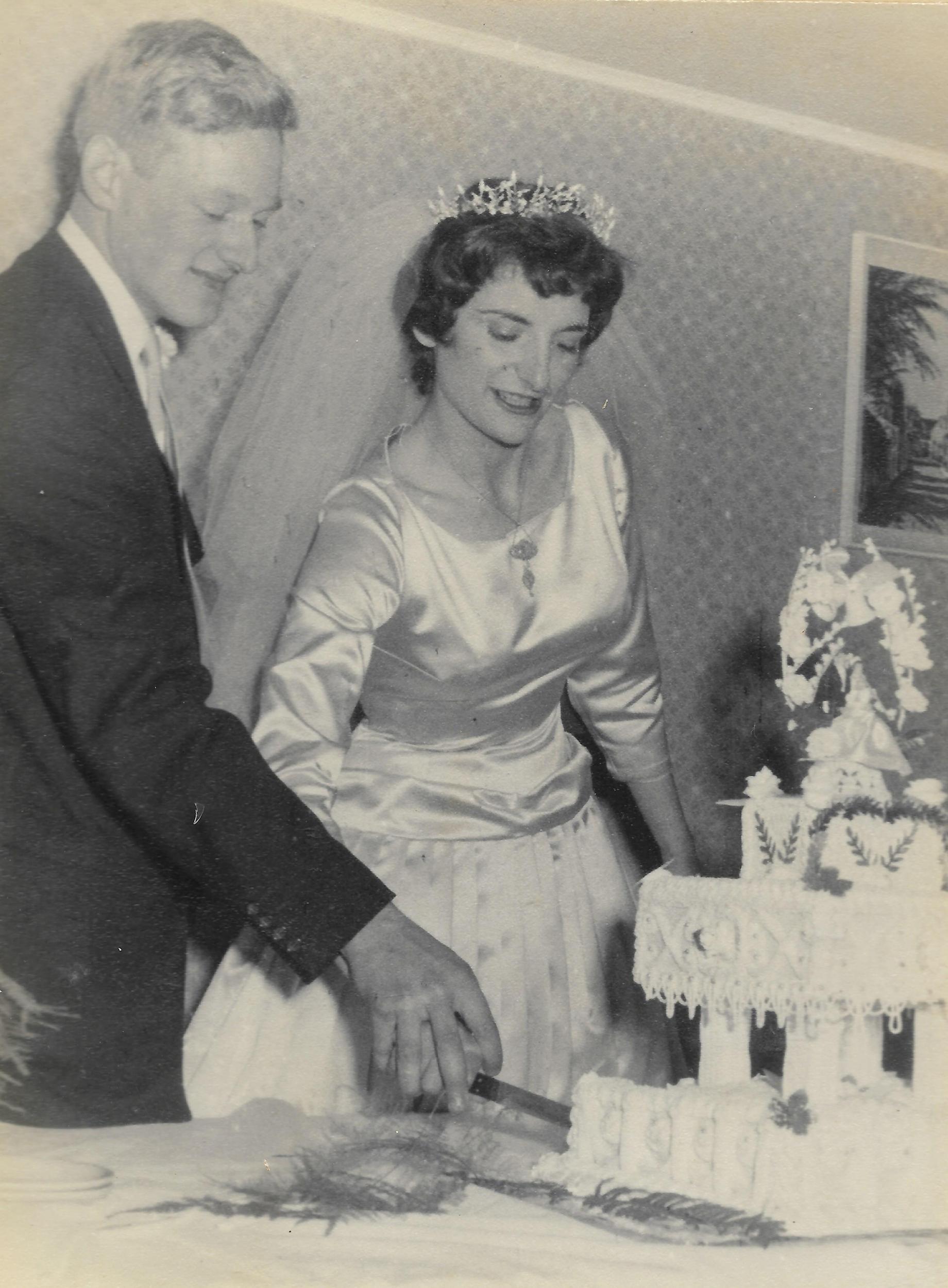
He and Nana wrote letters and he eventually posted a ring to help her fend off male lecturers who refused to believe she was engaged. She took the Lusitania across the Atlantic to Montreal in July 1957 after finishing her degree, and then flew north to Schefferville.
“I remember it being quite strange, like meeting him for the first time,” Nana tells me.
“I don’t think I had any idea what it would be like. I just used to go along with things,” she says. “I always wanted to go abroad.”
My grandparents didn’t marry straight away, staying in separate men and women’s hostels while Nana worked in a warehouse. The plan had been to go back to England for the wedding, but they decided the effort and the expense were not worth it and had the dress material sent over the ocean. Nana’s mother Hilda travelled to Canada too, taking the train from Sept-Îles with Mike’s mother Georgina for a midwinter wedding in the Hotel Montagnais, with around 35 guests.
Queen Elizabeth visited Schefferville for the day in 1959 when Nana was heavily pregnant with my dad. She remembers grass being flown in specially to border the path to the same hotel, where the Queen was to use the toilet.
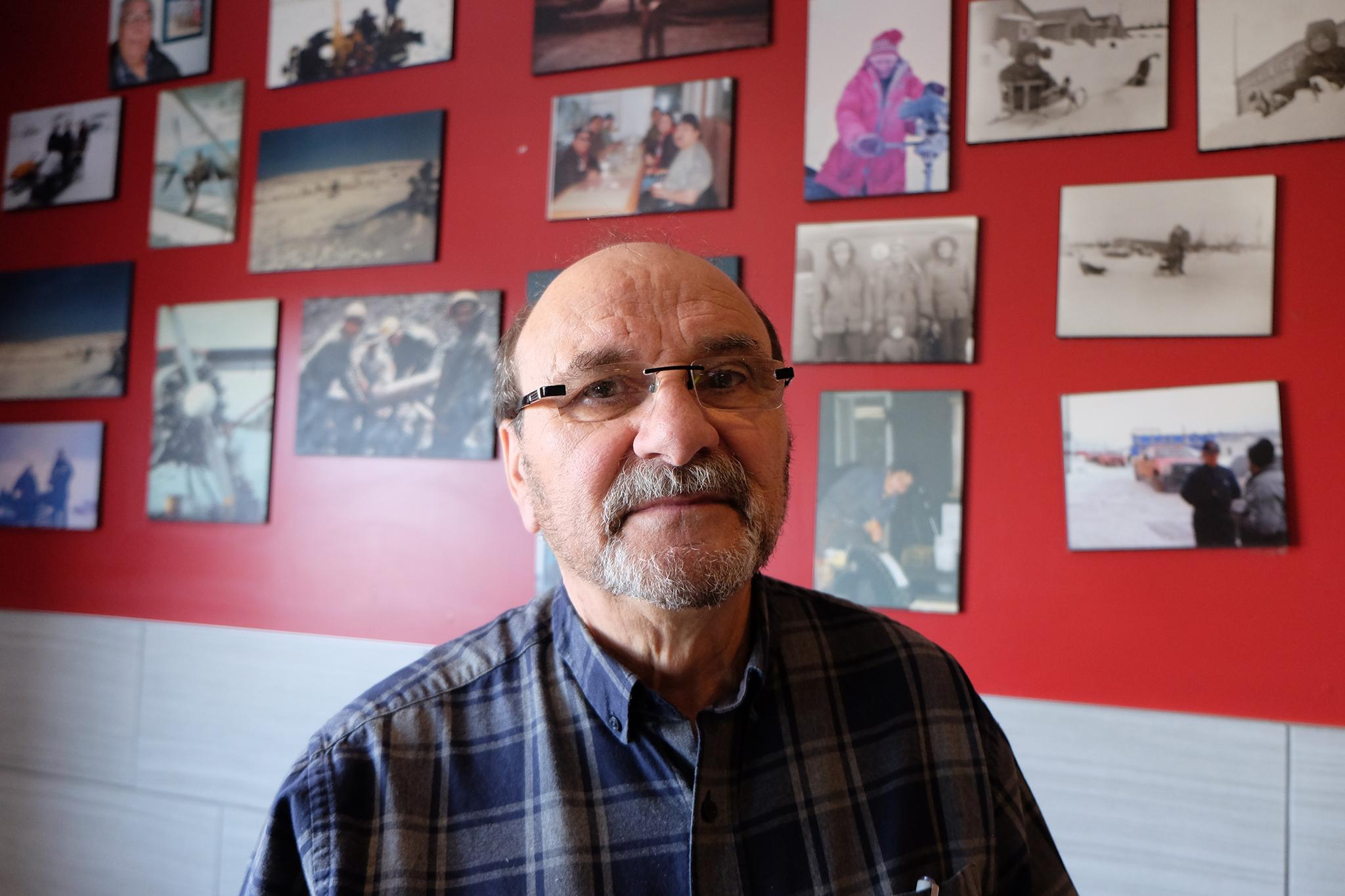
My father David was born on 15 August 1959, in what Nana describes as a single-storey shed (the town’s modern hospital was not finished until 1960). A couple of babies had died there, so he was kept apart from Nana for a week, only given to her to hold when he needed feeding.
By now the IOC had given my grandparents a warm, modern house with a basement. As winter set in Nana remembers dad’s nappies freezing when she tried to hang them outside. “I couldn’t bend them to get the peg on,” she recalls. “And then I realised that they were supposed to go in the basement.”
The battle had left marks, as much on people as on buildings. The demolition of part of the city was going to begin. I was unable to witness it
They had a busy social life in a town whose population Nana estimates was then in the “low thousands”, with an average age of 23. Dinner with friends, bridge evenings, curling in an indoor rink protected from the cold. They avoided the gambling that occupied single men with ample money to burn. And while there was a ski hill, with a tow-rope tied to two truck engines, it was too cold to use when the temperature dropped below -20C, as it did for much of the winter.
They didn’t, however, have much contact with the First Nations, who then lived in shacks outside Schefferville with no running water or electricity. Grandpa Mike worked with one, Joe, whose intimate knowledge of the land was put to use in the surveying process. But Nana doesn’t remember meeting a single native person in her time in Schefferville.
“I knew there was a reservation. But… you don’t know anyone in it,” she says, trying to explain the segregation. “I couldn’t walk out of my house and walk to the reservation. I wouldn’t know who to ask where it was.”
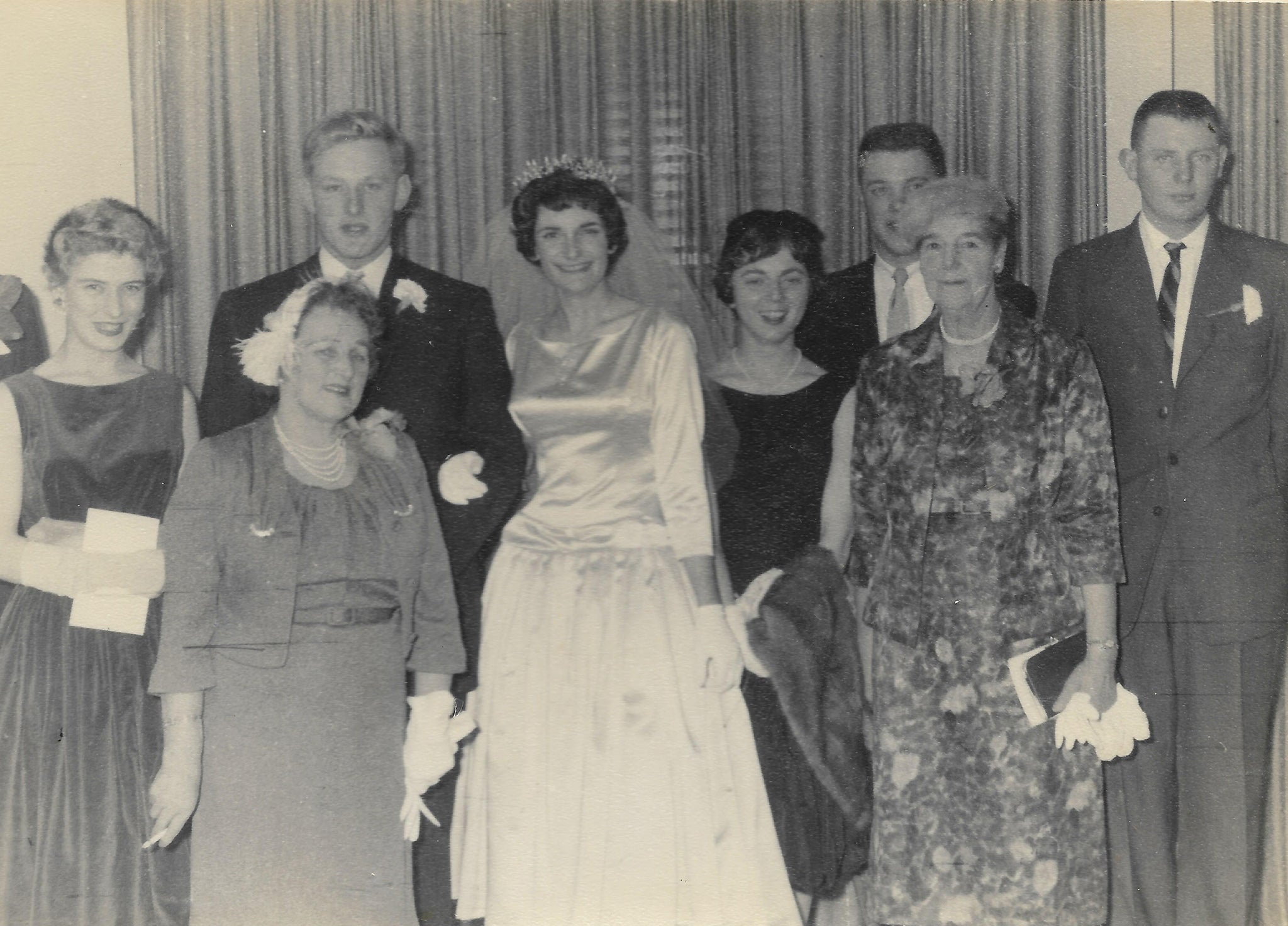
Schefferville was, more than anything, a working town. The mine ran 24 hours a day, seven days a week, apart from when the thermometer registered below -50C. “If you’re going to work outside for nine hours at a whack… you’re pretty tired,” Grandpa Mike says.
“It was a pioneering existence,” says Nana. “There were men from all sorts of countries and backgrounds. And mainly they were there to make a lot of money and get out quick.”
My grandparents got out too, just as the IOC was starting to transform Schefferville into a place where people stayed to build families. Many of those people remember the town with nostalgia, sharing memories on Facebook groups and going to biannual reunions. But it is tinged with a sadness, a bitterness at what was lost when the mine closed and most of the population left.
“It was a great little town,” says Todd Tricco, who was born in Schefferville in 1971 and left with his family around a year after the mine shut down. “I think about it every day. I think of all the good times that I had there, and what could of been.”
“If the mine hadn’t shut down… life for me would have been different,” says Mr Tricco, who works at an oil refinery in New Brunswick. “Most people for sure would have grown up to do what their fathers would have done at the mine.”
“We had everything there we needed,” he says. “Honestly we did.”
Claudia Lemieux was 19 when she left with her mother, who had owned a pool hall, in September 1983. “There were a lot of parties,” she remembers. “Every night we celebrated the departure of someone who was leaving the next day.”
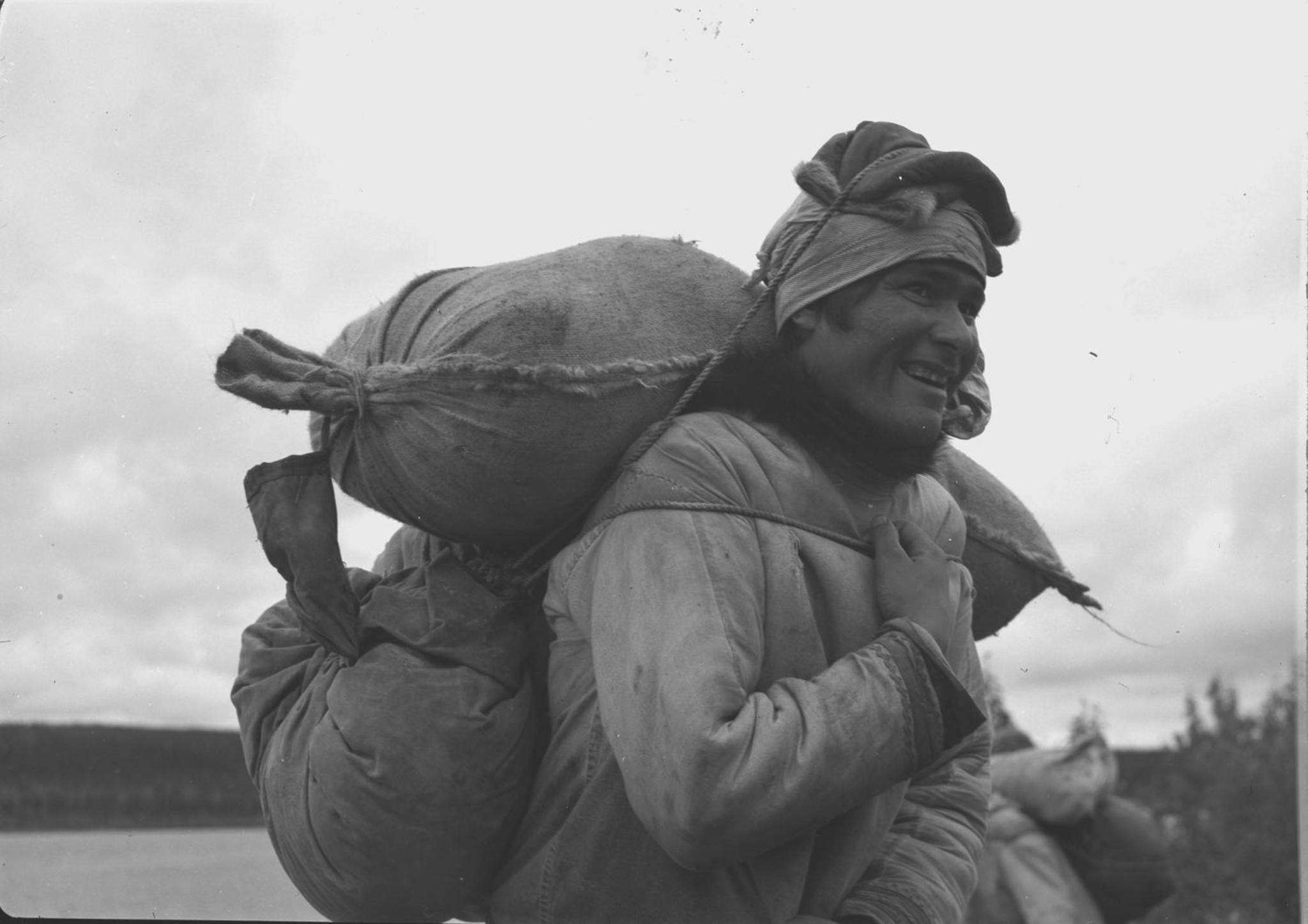
They were compensated for the cost of the move, but nothing more. “My mother lost everything,” says Ms Lemieux.
Jocelyn Lemay finally left Schefferville on 25 November 1988 with less than a third of her $8,000 promised compensation, having fought for six years to try to save her home and her way of life.
“The battle had left marks, as much on people as on buildings,” she says, by email. “The demolition of part of the city was going to begin. I was unable to witness it.”
After a winter in Quebec City, Ms Lemay spent six months roaming Quebec with her young daughter, sleeping in the car. She eventually poured her grief into a history of Schefferville, Terre Rouge (Red Earth), published in 2014, in which she castigates the IOC and the federal and provincial governments for what she sees as abandoning the town’s residents.
“We could not go home because we had been expelled,” says Ms Lemay, who wants to be buried alongside her grandparents in Schefferville. “I was totally lost.”
But the two indigenous First Nations that lived next to Schefferville, the French-speaking Innu and their English-speaking Naskapi cousins, refused to leave. Many rue the destruction of services they used, like the hospital, and the spike in alcoholism that accompanied the rise in unemployment.
But plenty also brush off the closure. They say they survived by hunting as they always had done. And, some argue, not that many had jobs in the mine anyway.
“The white people in general didn’t have any faith, they didn’t have any confidence in the Innu or Naskapi working,” says Roderigue Mackenzie, who was 11 when the mine closed. He remembers his Innu relatives standing around the ice hockey arena to stop it being demolished.
A few white people stayed too. One in particular looms large over the town. Gilles Porlier owns 25 houses. He employs the taxi drivers and the undertaker. He rents cars and runs ambulances all over Quebec. A stocky, moustachioed figure fond of checked shirts, Mr Porlier can be found eating with friends in his diner, Restaurant Bla Bla, striding through his grocery store, or sat at his desk in the back of his car repair workshop. Residents sometimes refer to the town as Scheffer-Gilles or Porlierville. They are only half-joking.
Mr Porlier moved to Schefferville in 1970, after working in the town for three summers during his classics degree. For the next 12 he worked as an electrician in the mine, taught part-time and began to build his empire.
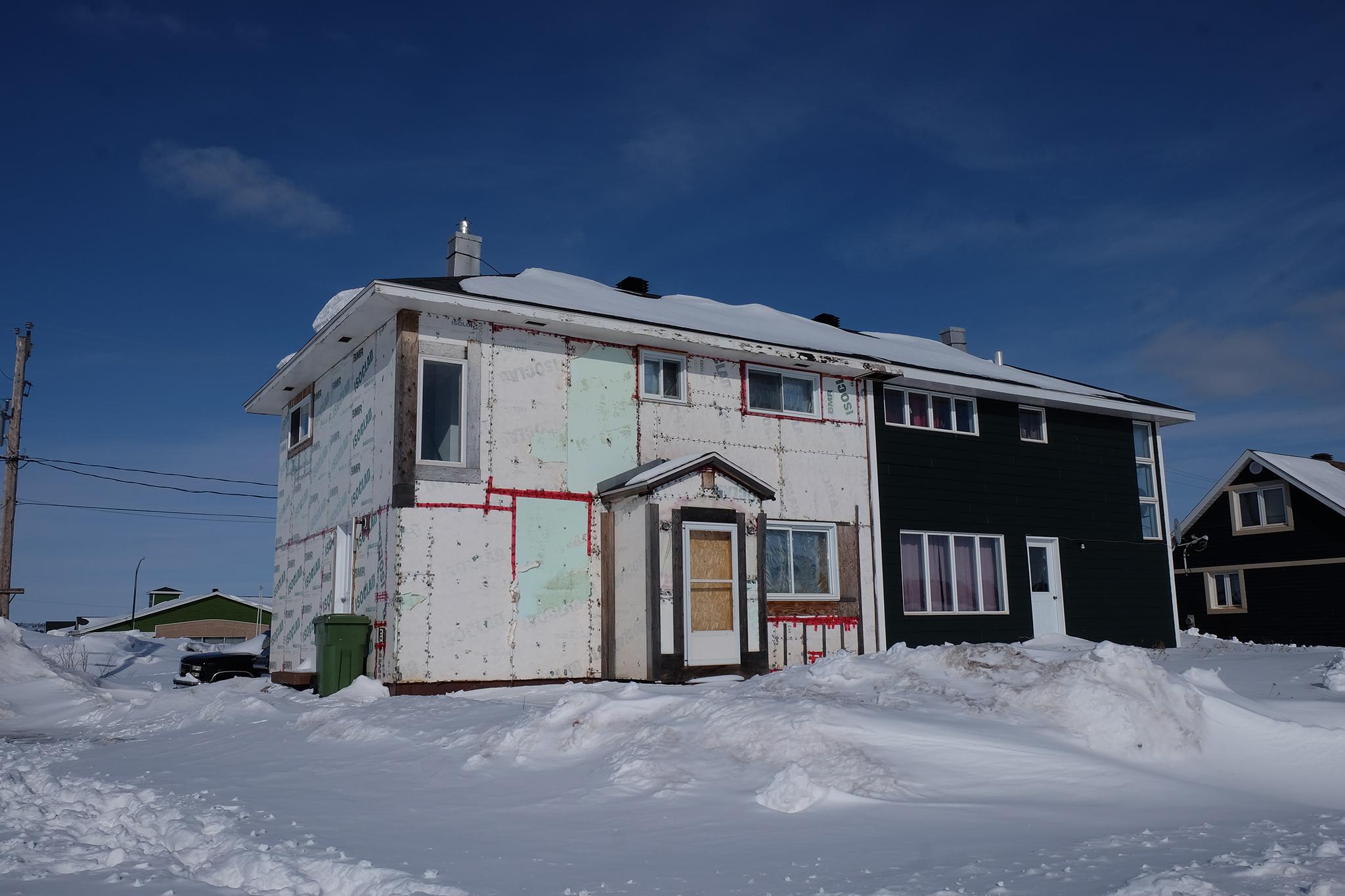
“When the mine closed… instead of selling for nothing I bought for nothing,” he says, over a fry-up breakfast at Restaurant Bla Bla. He was offered, he claims, $58,000 to leave Schefferville.
“So I said, ‘F*** you,’” he recalls, with relish, in heavily-accented English. “I ripped the cheque. An hour later I bought 10 houses.” (Many houses were sold for just $1 when the mine shut.)
Mr Porlier has said to other journalists, of whom he is intensely suspicious, that he wants to retire soon. Less than 10 per cent of his businesses, which he says are worth over $75m, are actually in Schefferville. And a daughter, who lives down south, is “ready” to run his profitable ambulance business. But he doesn’t want to let go just yet.
The white people in general didn’t have any faith, they didn’t have any confidence in the Innu or Naskapi working
“I’m not a prisoner, the door is open,” he says. “But… I’m a prisoner of my property. If I’m not here things would fall apart.”
As for mining, which returned to Schefferville in 2011, after exploration work from the mid-2000s, Mr Porlier is blunt about the benefits to his businesses. “They don’t bring nothing.”
That is partly because such remote mines now mainly operate with fly-in, fly-out workers, rather than investing in a town, as the IOC did when it built Schefferville. The industry has, though, brought around 200 seasonal jobs for First Nations. That’s despite only one company, a subsidiary of Indian conglomerate Tata, remaining in the area after commodity prices crashed in 2014. The reservations are now flush with new skidoos and pickup trucks.
The First Nations’ band councils also negotiated yearly payments from Tata worth hundreds of thousands of dollars and have set up machinery and road companies that get business from the mine.
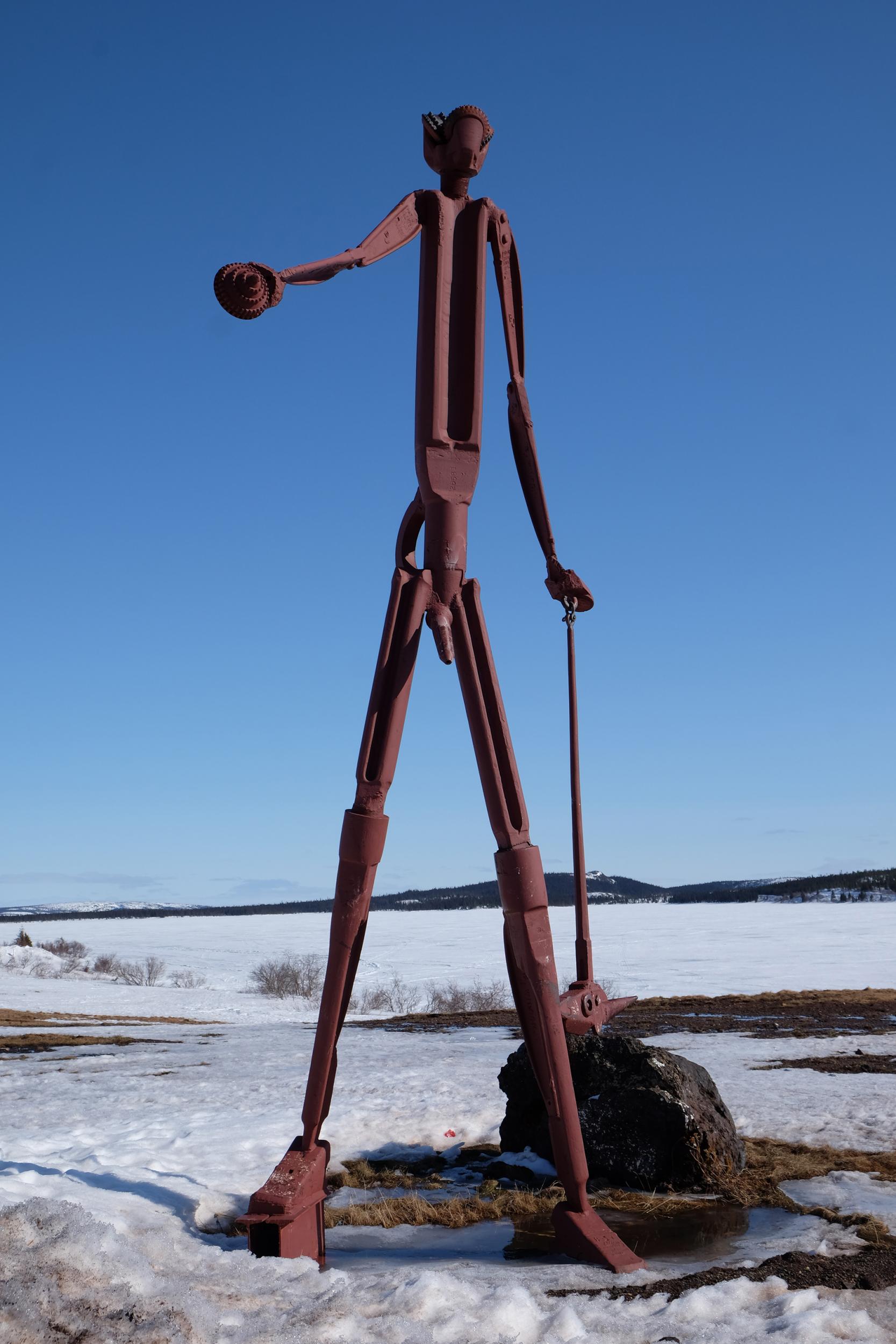
But the money has not placated many Innu and Naskapi concerns. “I’m very worried about my community. I’m worried about my grandkids,” says Louise Mameanskum, who works for the local, indigenous-owned train company. She notices red dust settling on the trees, how the local caribou herd has all but disappeared, and the rash on her baby granddaughter’s skin.
“It’s not normal if a lot of kids have eczema here. Maybe the water that we’re drinking is contaminated.”
There is no evidence, other than locals’ perceptions, to support such claims. A report by the Canadian Environmental Assessment Agency earlier this year, for example, concluded that a proposed new mine wouldn’t have “significant, adverse… effects” on First Nations’ health. And the caribou population had been falling before mining restarted.
But the relationship between indigenous locals, particularly the Innu, and Tata is fraught at best. So much so that the Innus blockaded the mine from 26 July to 2 August this year. They said they were angry about the dust, and about “red water” that had spilled out from the mine site into traditional fishing areas during unusually heavy rains in spring 2017.
“From Tata’s side it never happened and if it happened it was not bad. So we got mad,” says Francois Leveque, a lawyer for the Innu nation, swearing profusely throughout our interview.
Armand Mackenzie, a spokesman for Tata Steel Minerals Canada, disputes this. “We believe that we have done very consistent work with our First Nation communities in a very transparent manner,” he says. “We have had very few issues over six years.”
“There’s capacity issues and governance issues,” Mr Mackenzie, a lawyer who formerly campaigned for indigenous rights, says pointedly of his fellow Innu.
The Innu take a more combative approach than the Naskapi, who have favoured negotiation and compromise over the years. They took to the barricades before, in 2010 when mining was set to restart. And, with another Innu nation from near Sept-Îles, they launched a $900m lawsuit against IOC in 2013. The case, which is still wending its way through Canadian courts, is for damages to the Innus’ traditional way of life since the 1950s. (The $900m figure is based on profits made by the IOC, which has been owned by British-listed mining giant Rio Tinto since 2000 and still runs a mine 130 miles south of Schefferville. IOC declined to comment.)
But, whether relations between Tata and First Nations improve or not, Schefferville’s residents will always harbour doubts about the value of digging out what lies beneath their soil. They have, after all, seen it all before.
“We have lots of jobs, we have money, we have everything we want,” says Lucien Mackenzie, an Innu council member. “But after, once [the mine is] closed, what do we have after? Only destructed land.”
Join our commenting forum
Join thought-provoking conversations, follow other Independent readers and see their replies
Comments
Bookmark popover
Removed from bookmarks